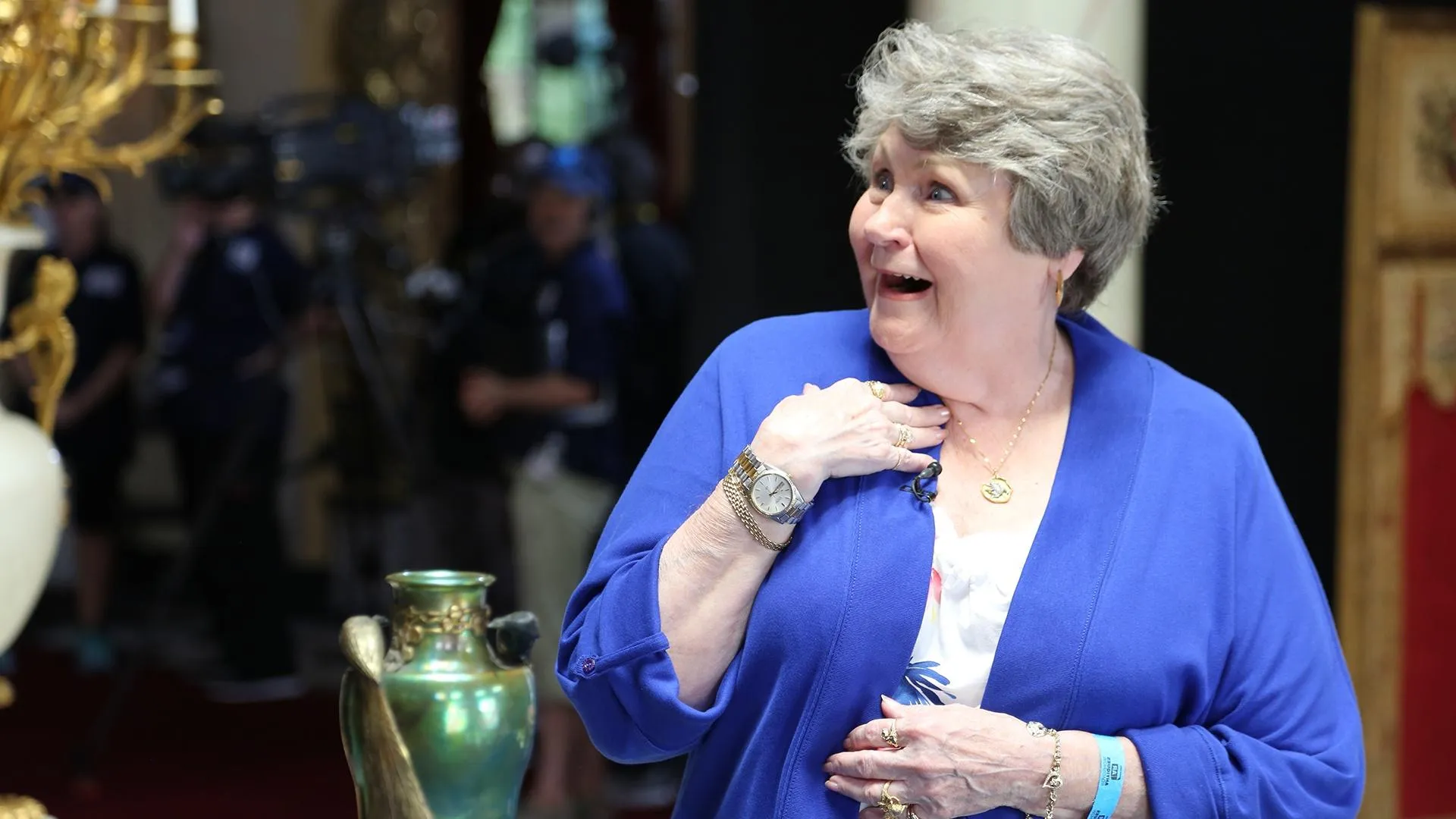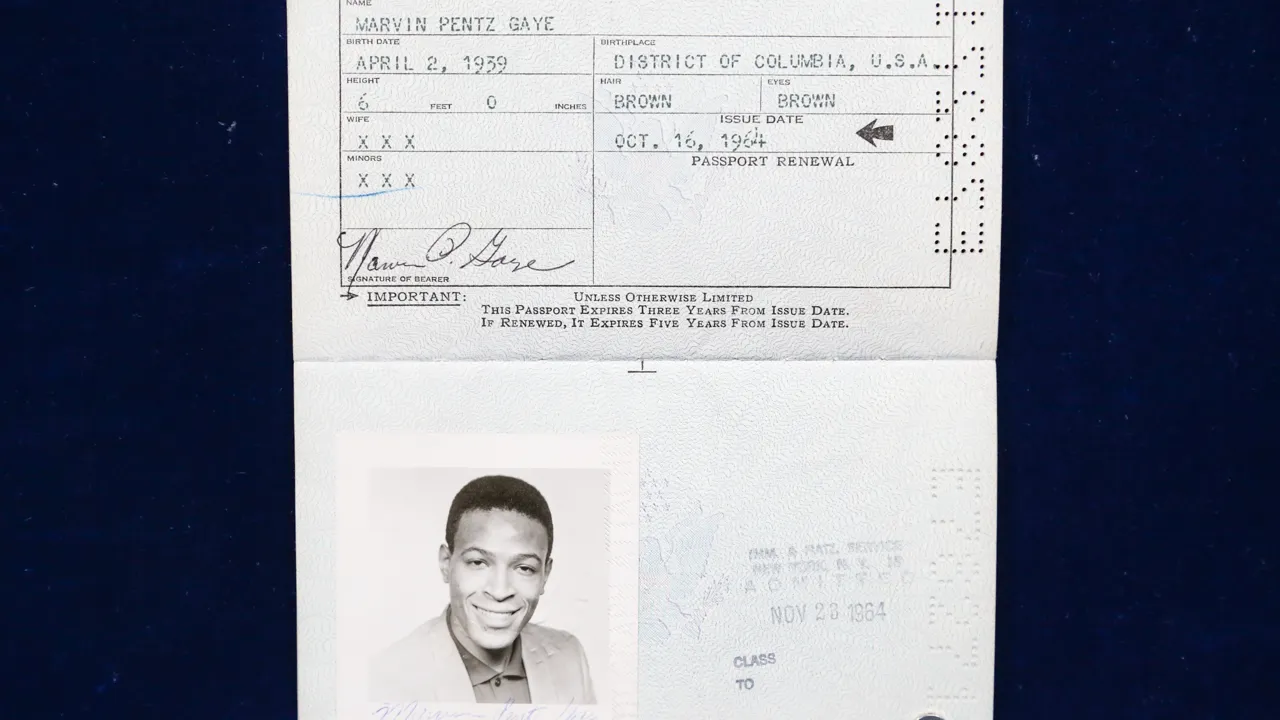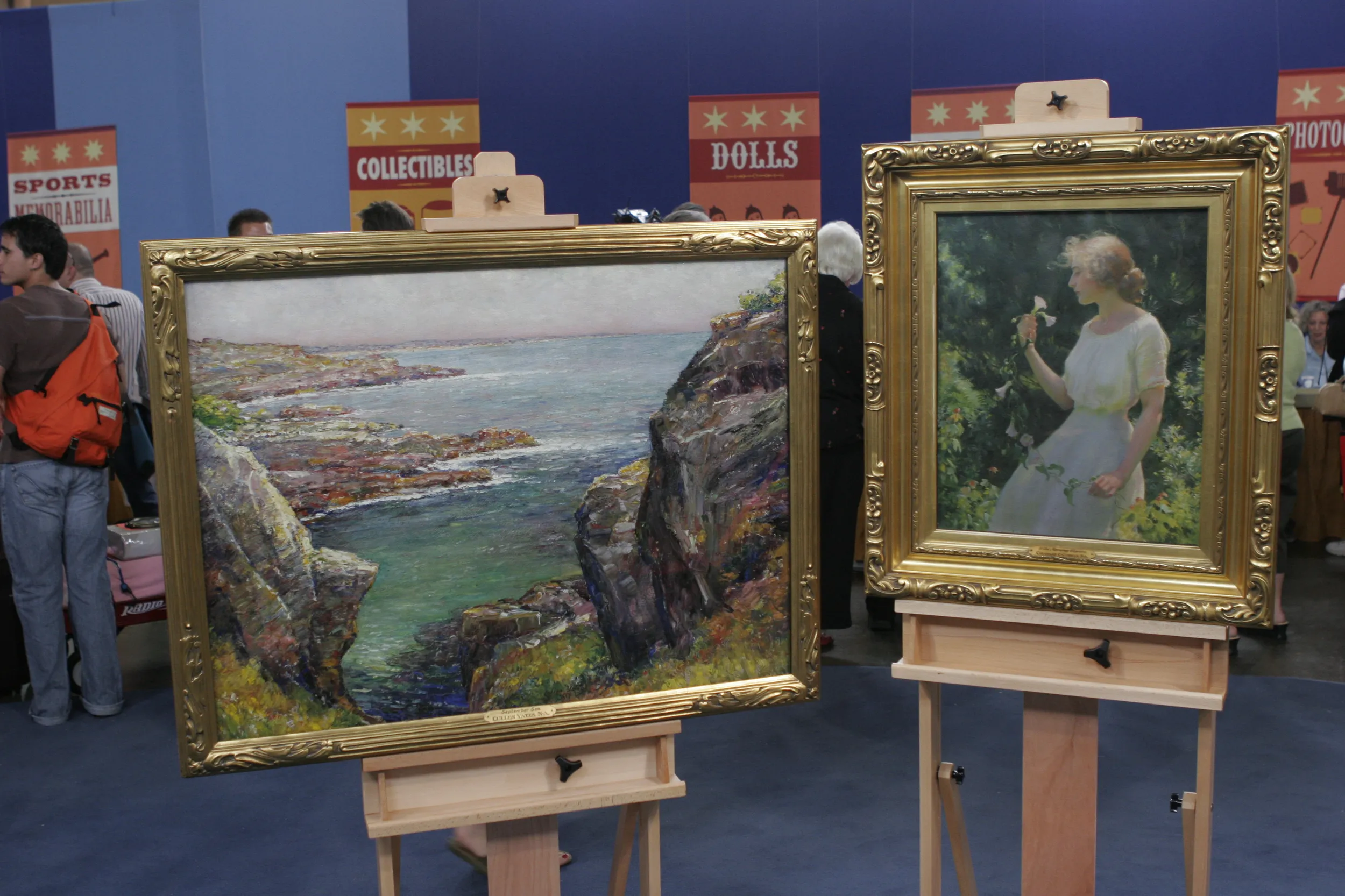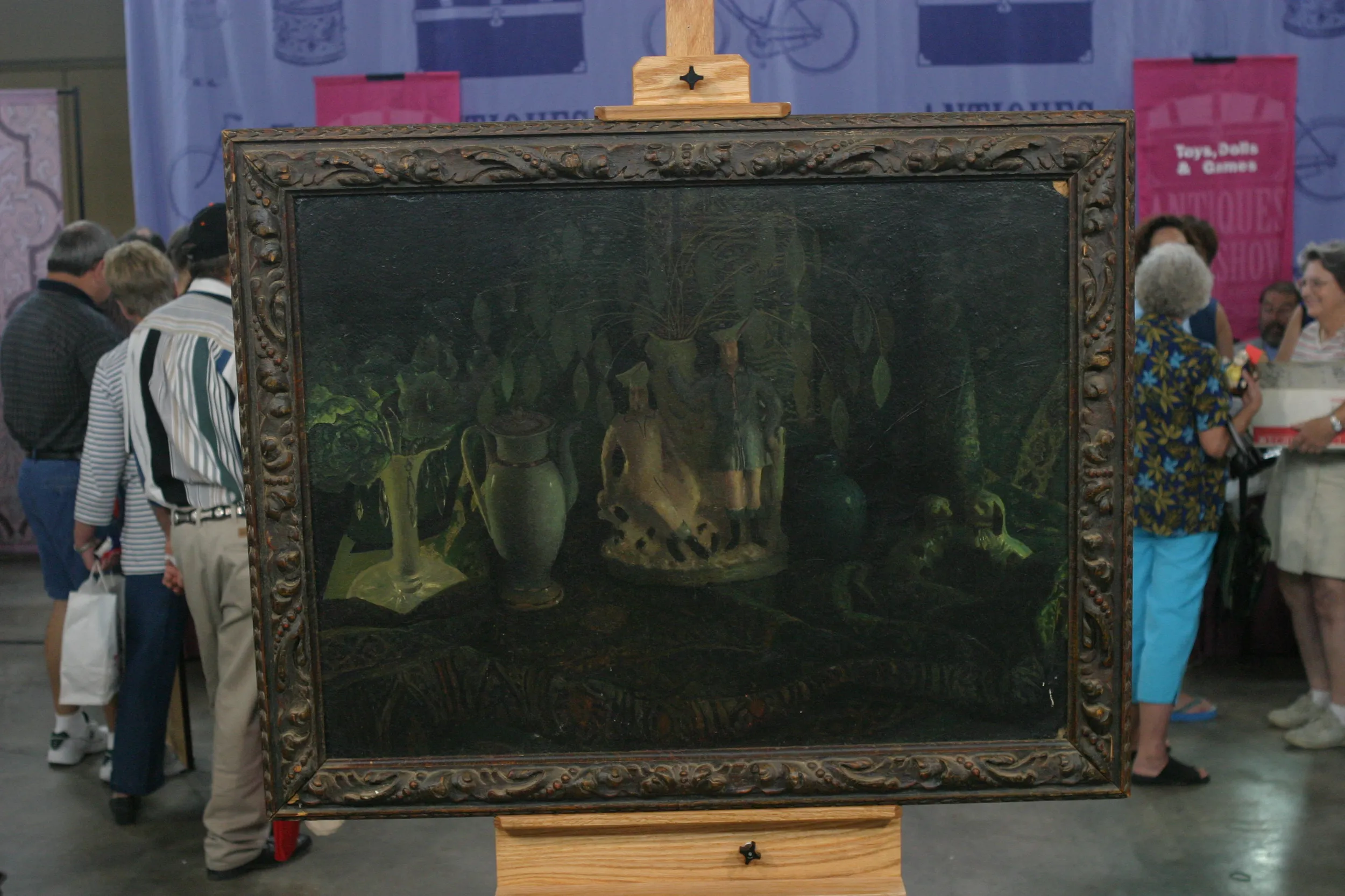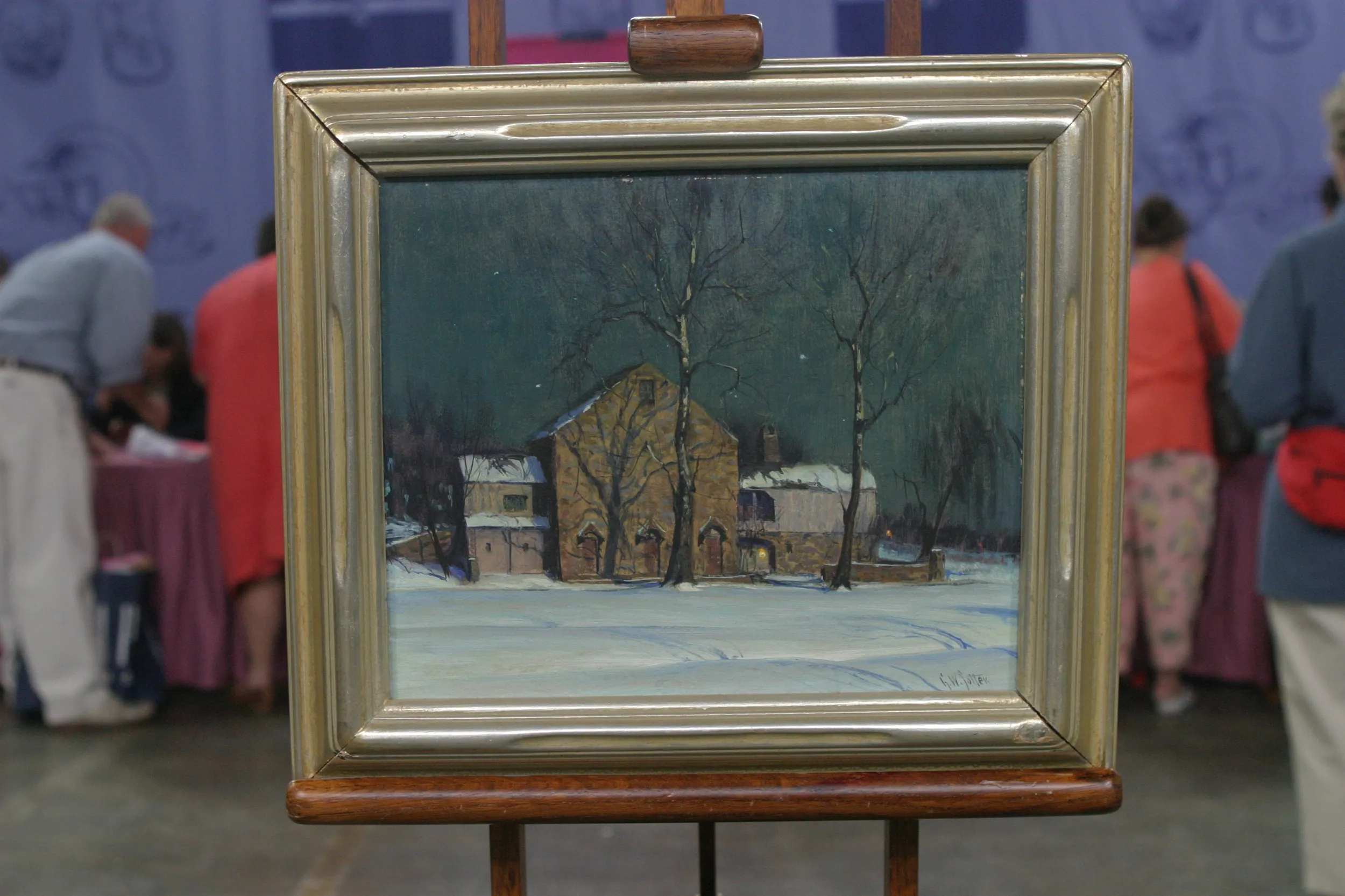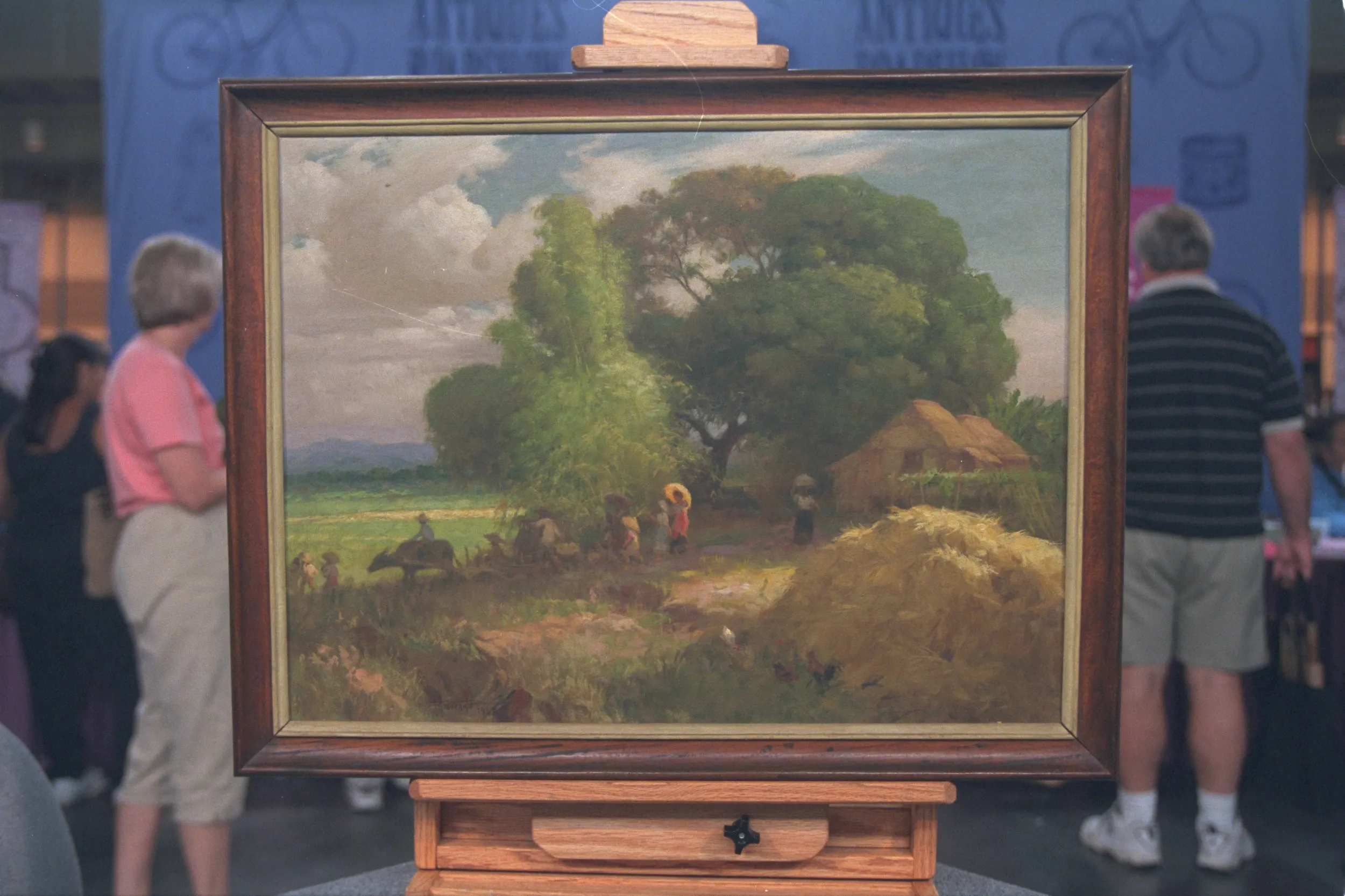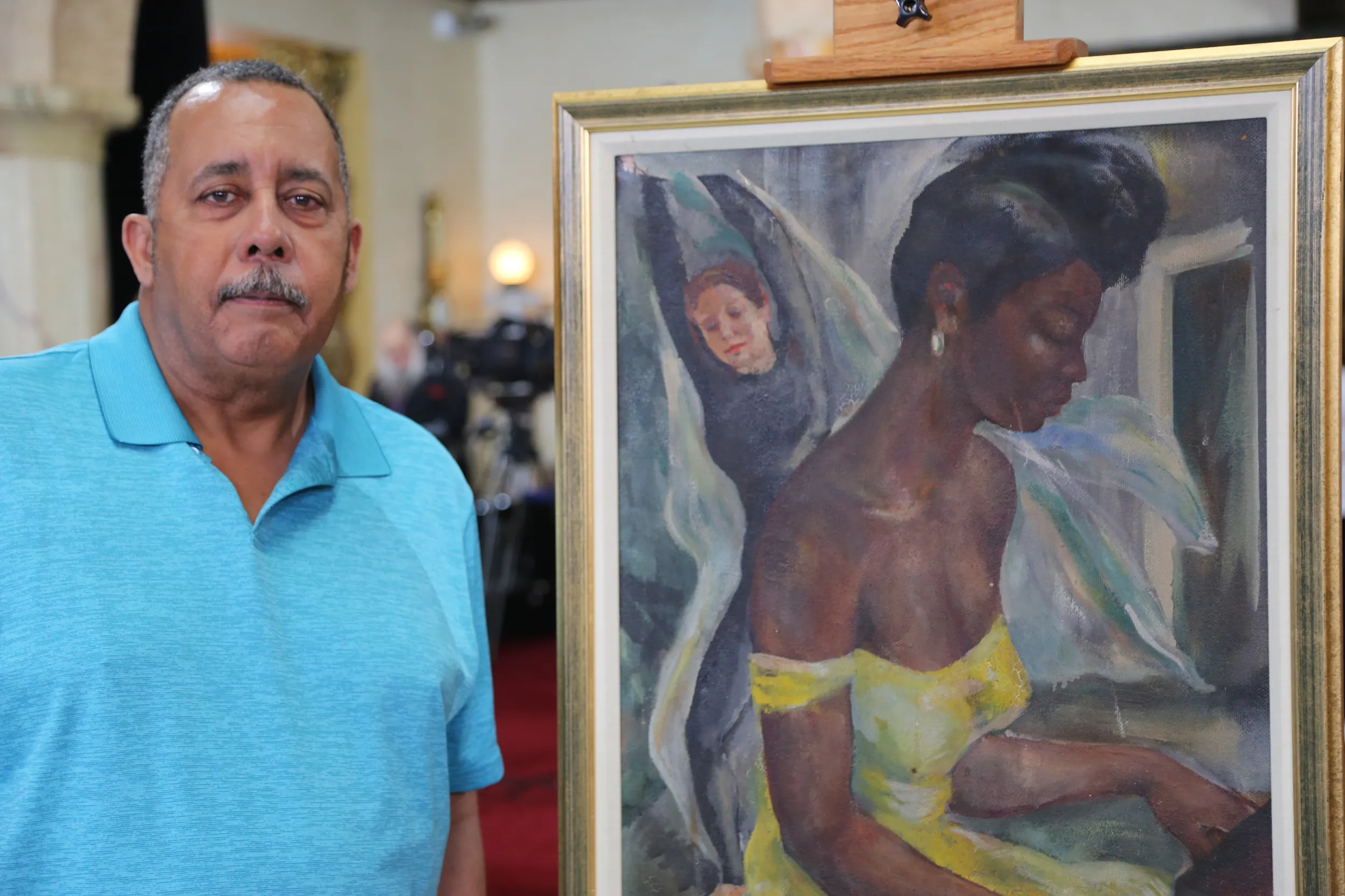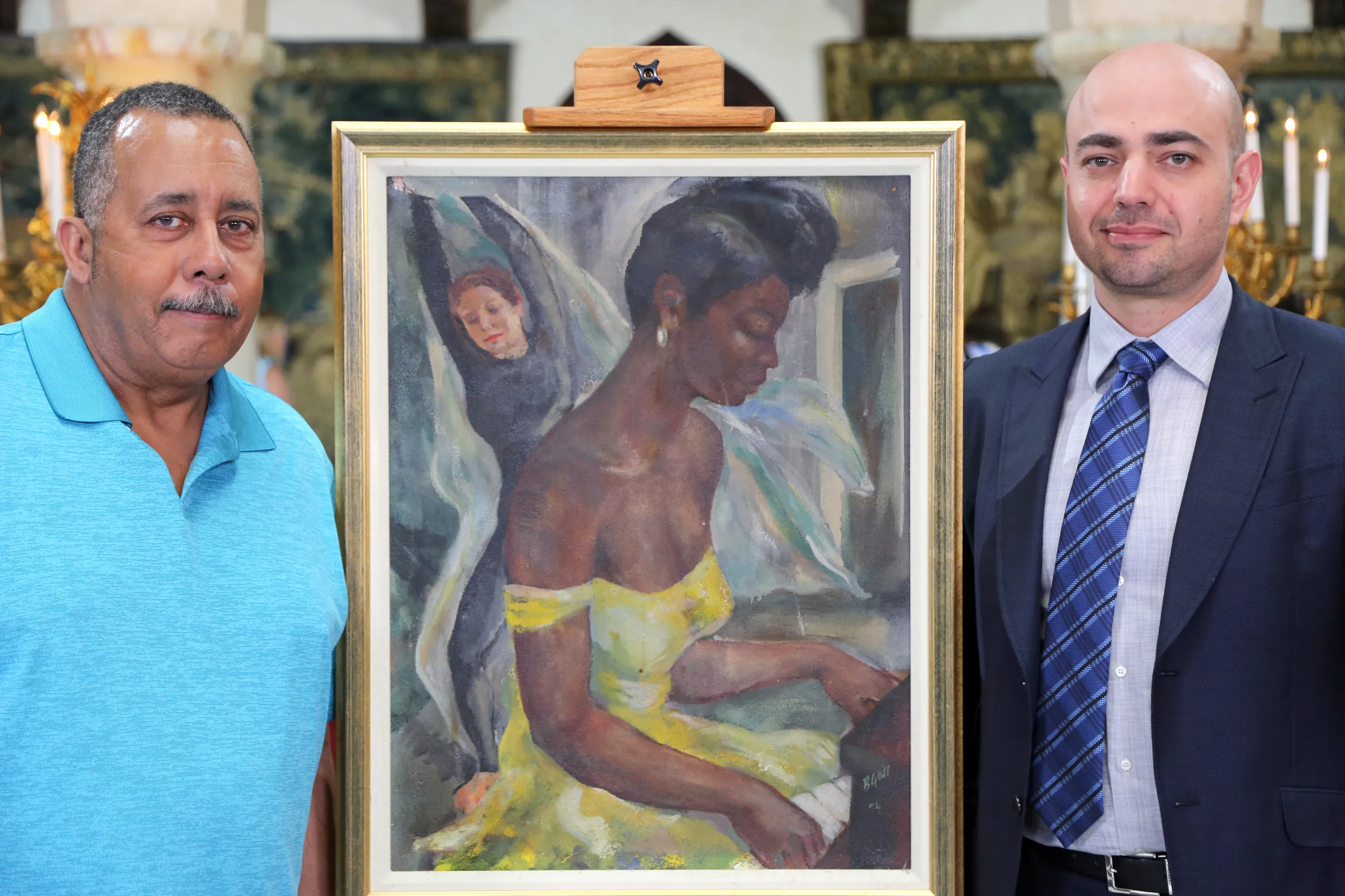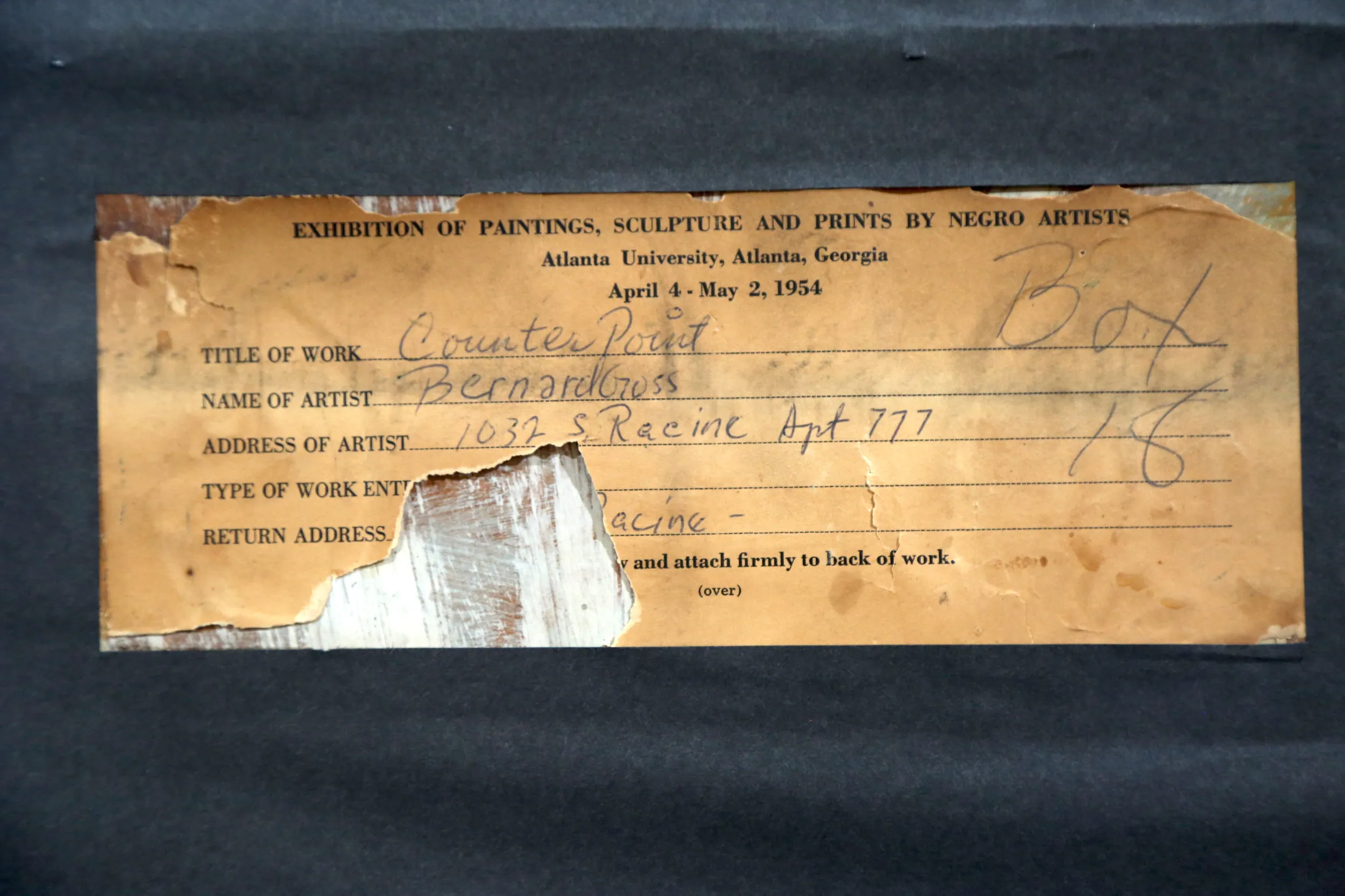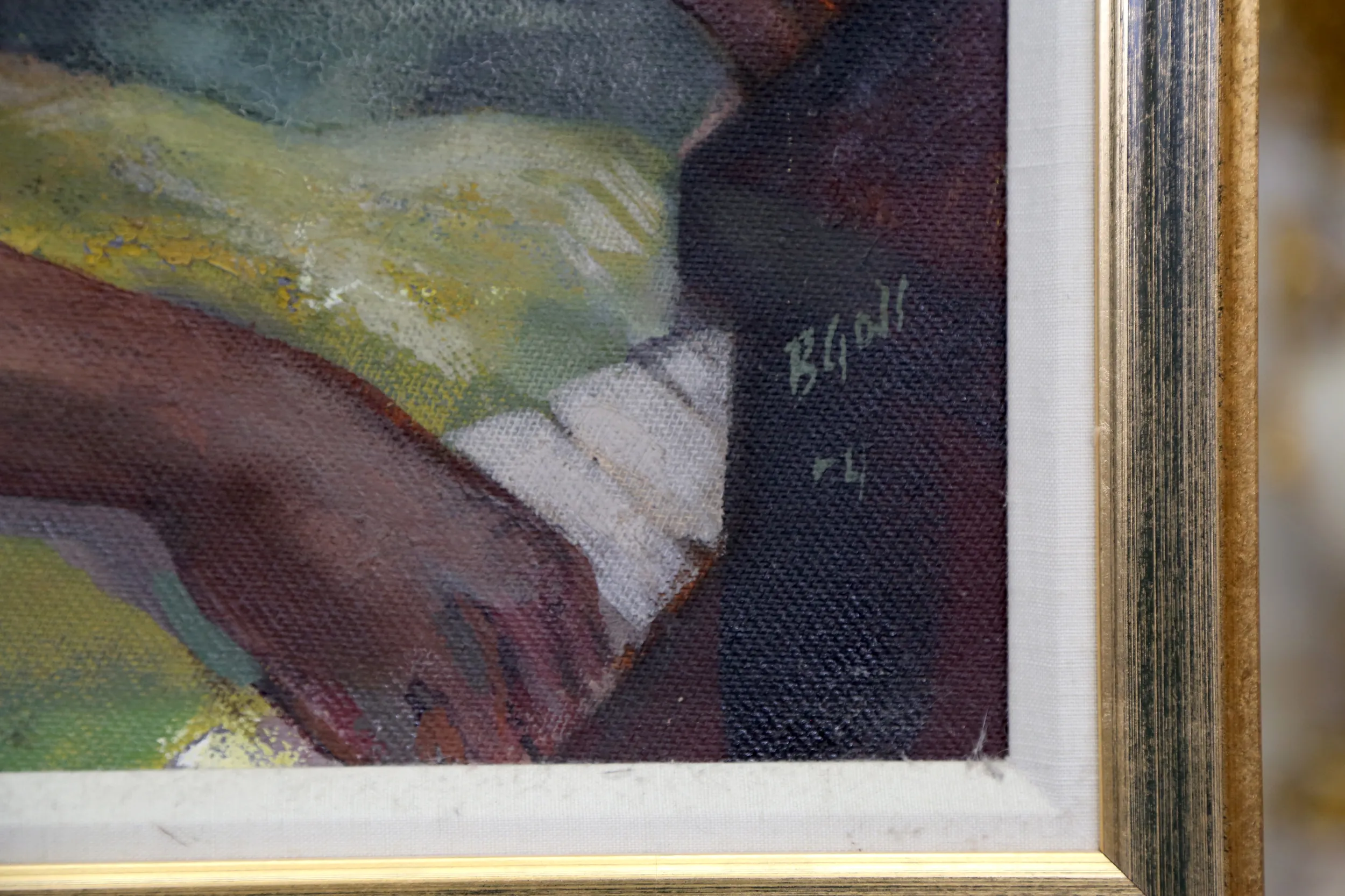GUEST: I've brought a painting which I inherited about 30 years ago. And it has remained in our family... I think it's been in since about 1955, maybe? It stayed unframed for many years, and when I inherited, I had it framed, and that's about all I can tell you about it.
APPRAISER: Can you tell me how much your mother paid for the painting?
GUEST: I have no earthly idea. I think she bought it from the artist himself, because there was a sticker on the back that had his home address, which is on Racine Avenue in Chicago, and I think she bought it from the artist, not from the show.
APPRAISER: The artist is Bernard Goss.
GUEST: Mm-hmm.
APPRAISER: And you're right, there's a sticker on the back, which is an exhibition label from Atlanta in 1954.
GUEST: Okay.
APPRAISER: This was in an, uh, in an exhibition that was actually of some note called "The Exhibition of Painting, Sculpture, and Prints by Negro Artists" at Atlanta University. This is from April 4 to May 2, 1954. Bernard Goss, he studied at the, uh, Art Institute of Chicago and became a Chicago artist.
GUEST: Mm-hmm.
APPRAISER: Eventually he married another very important artist, as well, Margaret Burroughs. Margaret Burroughs established the, uh, South Side Community Center. This was a WPA project, which was a Works Progress...
GUEST: Mm-hmm.
APPRAISER: ...uh, Administration of FDR. And actually, Eleanor Roosevelt, in 1941, attended the opening of that center, which is still open today. So he's an important artist for, for Chicago.
GUEST: My mother, who was a psychotherapist...
APPRAISER: Mm-hmm.
GUEST: ...worked for the South Side Center.
APPRAISER: She did?
GUEST: For a number of years. Uh, this was while she was going to school. I imagine that's how she got to know the artist, through his wife.
APPRAISER: That's very possible. This painting, which was painted in 1954, is actually very important, as far as its date and as far as what it depicts.
GUEST: Mm-hmm.
APPRAISER: Now, 1954 was a seminal year in the civil rights movement.
GUEST: Mm-hmm.
APPRAISER: Because that was the year of Brown v. Board of Education. And as we all know, Brown v. Board of Education basically, uh, outlawed segregation in the, in the schools. So when we look at the subject matter of this painting, what we have is an African American woman playing the, uh, piano, and a white woman dancing with her. The title of the painting, as it's titled on the back, is "Counterpoint." You can imagine, in 1954, when we're talking about the races getting together and, uh, desegregation, this painting was very apropos.
Mm-hmm.
APPRAISER: It relates to that time period. The way it's done is also very, very lyrical. It reminds me of Harlem Renaissance paintings.
GUEST: Yes.
APPRAISER: It's this, this kind of fluidity, the, the way the woman is dancing, and even the way the figure in the foreground is, is painted, with the kind of, the low dÈcolletage, the... Her look even reminds me of, of Harlem Renaissance painting.
GUEST: Mm-hmm.
APPRAISER: The painting is oil on Masonite. There are a lot of institutions and a lot of collectors for African American art.
GUEST: Mm-hmm.
APPRAISER: I would put an auction estimate of $7,000 to $10,000 on it.
GUEST: Okay.
APPRAISER: What's the insurance value? The insurance value is going to be, uh, I, about $15,000.
GUEST: Okay.
APPRAISER: But it could, insurance could be as, as high as $25,000, it depends what kind of appraisal you get.

